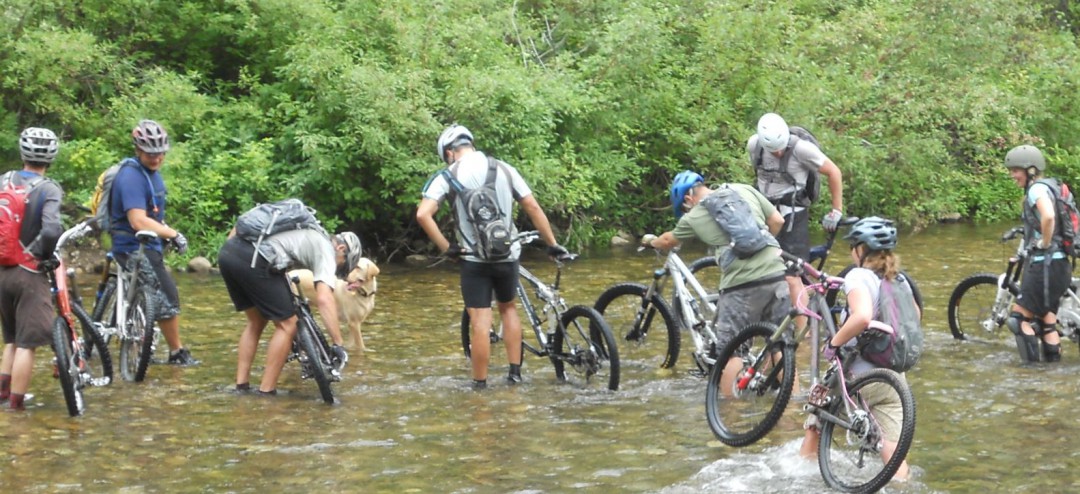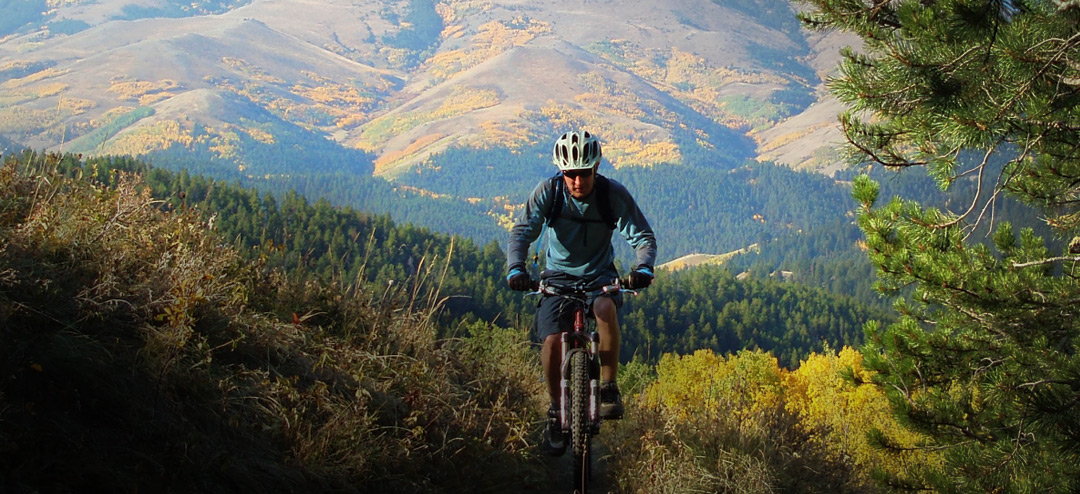Managing E-bikes on National Forest Lands – comment by 10/24
Greetings bicyclists and Friends of the Little Belts, attached is some information that you may wish to share with members of FOLB or your various respective groups. While it is not specific to the Little Belt Range, or even the HLC or Montana Forests, this directive will help to direct future management of E-bike use on all National Forest lands.
P L E A S E review and comment. Hopefully in favor of the proposed national rule change. Comment HERE.
At a national level the Forest Service has issued proposed guidance on 9/24/2020 to manage E-bike use on National Forests and Grasslands.
The proposed directives include e-bike definitions consistent with the Travel Management Rule (36 C.F.R. 212). Proposed updates also create three classes of e-bikes for designation as motor vehicles, clarifying direction when designating roads, trails, and areas for e-bike use at the local level. Official rollout of the directives proposal will be managed by Office of Communications, which includes a publication strategy scheduled for release to Regional PAOs later today.
Summary of key proposed changes (mostly additions) include:
Definition of eBikes: a bicycle equipped with an electric motor that may be activated in order to assist with or replace pedaling.
Definition of eBike Classes:
- Class 1: eBikes that are pedal-assist only, with no throttle, and have a maximum assisted speed of 20 mph.
- Class 2: eBikes that also have a maximum speed of 20 mph, but are throttle-assisted.
- Class 3: eBikes that are pedal-assist only, with no throttle, and a maximum assisted speed of 28 mph.
FSM 7702: Paragraph that establishes the promotion of e-bike use on NFS lands as an objective; would add a cross-reference in FSM 7703.13 and 7703.14 to specific guidance on designating NFS trails and areas on NFS lands for motor vehicle use. FSM 7711: Adds a category for designating e-bike use on NFS trails
Overview
Advancements in e-bike technology, tremendous growth in the popularity of this recreational activity, and rapidly increasing opportunities for e-bike use on other federal lands have prompted federal agencies such as the USDA Forest Service, the Bureau of Land Management, and the National Park Service to examine current authority, regulations, and policy governing the use of e-bikes. Federal land management agencies are considering options for facilitating and expanding access for e-bikes use.
The Forest Service is currently requesting public input on proposed updates to directives that clarify how e-bikes are managed on national forests whereby creating an e-bike definition and by adopting the three classes of e-bikes for designation as motor vehicles. These directive updates provide needed guidance to field units under existing Travel Management Rule definitions, and establish criteria to designate roads, trails and areas for e-bikes use.
Response to Query
Emerging technologies such as e-bikes are changing the way people enjoy their visits to national forests and grasslands. As these use trends change with time and new technologies, the way we manage lands to ensure their long-term health and resilience must change as well. This is why we are closely examining our policy to identify ways to expand access for American’s to enjoy these recreation opportunities on our forests and grasslands in ways that meet user needs while continuing to protect forest resources.
More than 60,000 miles of trails on national forests and grasslands are currently open to e-bike use. In addition, Forest Service officials at a local level may make special designations to allow e-bike use in areas that are currently non-motorized, as long as that use would not significantly affect forest resources.
These designations would still be required to undergo the appropriate environmental analysis and public engagement, just like any other project, to protect people, communities and resources from potential impacts. We are closely examining use trends and are seeking opportunities for public engagement in determining how best to balance use demands with what is best for natural resources on our forests and grasslands.
Key Messages
Around 60,000 miles of trails and thousands of miles of roads on national forests and grasslands are open to e-bike use.
- The Forest Service currently manages approximately 159,000 miles of trail across the United States for a variety of recreational uses. An estimated 60,000 miles of trail, about 38 percent of all Forest Service trail, is currently open for e-bike use.
- Under the Travel Management Rule, officials at the local level may make special designations to allow e-bike use on trails that are currently non-motorized.
- The San Juan National Forest in Colorado recently used this special designation process to allow e-bikes in non-motorized areas, by completing associated National Environmental Policy Act analysis along with public scoping and input.
- There are several year-round resorts operating under a special-use permit that have established e-bike use.
- The Forest Service manages e-bikes as motorized vehicles and allows their use wherever motor vehicles are allowed.
The Forest Service is closely examining how to accommodate e-bikes on national forests and grasslands.
- E-bikes are becoming increasingly popular among outdoor recreationists for use on national forests and grasslands and other public lands.
- E-bikes offer an additional recreational opportunity to users.
The updates to directives provide needed guidance for line officers to expand e-bike access and protect resources
- The Forest Service is committed to providing high quality customer service to users seeking new recreational opportunities.
- The proposed directives guides Forest Service decision makers at the local level to make determinations with input from the public based on local conditions.
- The new classes of e-bikes established in the directive allows further precision when determining if e-bike use is appropriate.
- The updates support the efficient expansion of e-bike use on national forests and grassland through providing consistent and clear guidance to Forest Service officials on designating trails.
Questions and Answers
Q: What is the Forest Service Manual?
The Forest Service Manual contains legal authorities, objectives, policies, responsibilities, instructions, and guidance needed by Forest Service line officers and primary staff in more than one unit to plan and execute assigned programs and activities.
Q: What are Forest Service Handbooks?
Forest Service Handbooks are the principal source of specialized guidance and instruction for carrying out the direction issued in the FSM. Specialists and technicians are the primary audience of Handbook direction.
Q: What is a directive?
Simply put, directives are chapters and sections that make up the Forest Service Manual and Handbooks. They provide the objectives, responsibilities, and instructions that guide employees in how they will accomplish the agency mission.
Q: How is the Forest Service managing e-bikes differently from the Department of Interior?
The United States Department of Interior (DOI) and the USDA Forest Service are taking slightly different approaches to managing and promoting e-bike use. The DOI has issued a proposed rule that
would exempt e-bikes from the definition of “off-road vehicle” or “motor vehicle,” which usually apply to motorized vehicles like e-bikes that can go off road. The Forest Service’s proposed directives would use the existing legal and programmatic framework when managing e-bike use in order to maximize consistency and efficiency for users. Consistent with Executive Order 11644, the proposed directives would require designation of off-road use of motorized vehicles and NEPA analysis.
Q: Where are e-bikes currently allowed on national forests and grasslands?
Class 1, 2, and 3 e-bikes and electric mountain bicycles (eMTBs) are allowed on approximately 60,000 miles or nearly 40 percent of trails on national forests and grasslands. These vehicles are also allowed on thousands of miles of roads on national forests and grasslands at maintenance level 2, 3, or 4.
Several year-round resorts operating under a special use permit have established e-bike and eMTB use within their permit boundary. Local officials may consider new opportunities for e-bike use on currently non-motorized trails and in non-motorized areas by utilizing a special vehicle designation in accordance with the Travel Management Rule (36 CFR Part 212, Subpart B). Designations involve appropriate environmental analysis, public involvement, and local decision-making.
Q: Is the Forest Service planning to change its policy related to e-bikes?
The Forest Service is actively exploring how to incorporate new trends in recreation use on national forests and grasslands and whether it may expand e-bike use in areas other than those currently open to it. The agency is using best-available science, public input, use trends, and other information in assessing how to proceed. As part of this process, the Forest Service is reviewing DOI’s newly announced direction and will monitor how they implement this direction.
In the meantime, the Forest Service is managing e-bikes with the goal of allowing a variety of recreation opportunities while protecting natural resources and other forest uses. We understand the challenging management situation this can pose in areas of adjoining/shared boundaries. The Forest Service is committed to listening to the people we serve to better understand their needs as well as providing them seamless experiences across boundaries as allowed by law.
Related Posts










